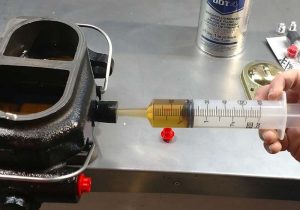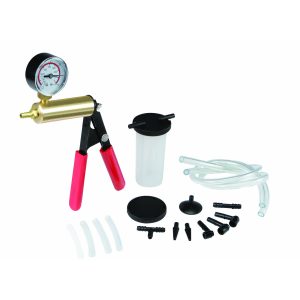Have you recently changed your brake pads and rotors? Now it is time to flush the brake cylinders and put in some new brake fluid. Wait, maybe you made a mistake and let the brake’s master cylinder run dry. Doing so introduces air into the hydraulic system that you must now bleed. Find out how to bleed the master cylinder without bench-bleeding so that the apparatus will work accurately.
Table of Contents
Is It Necessary To Bench-Bleed A Master Cylinder?
With regular driving, small quantities of air become captured in the brake fluid. It can also happen during routine maintenance and servicing. The third possible cause is a leakage in the brake system. If your brakes have worn out, it will be easier for air bubbles to accumulate in the fluid. When that happens, the brake pedal will feel spongy when you depress it.

In simpler words, when you bleed the brakes, you are flushing fluid through the brake system to remove any air bubbles. If these air bubbles remain trapped in the brake system, the hydraulic pressure of the brake fluid diminishes to a great extent. As a result, you will experience a reduction in the efficiency of the brakes. You do not want to encounter a drastically reduced braking power right when you need it.
Bleeding the brakes is a necessary procedure, but bench-bleeding is not the only option.
What is Bench-Bleeding?
Bench bleeding is one process to remove any air bubbles from the master cylinder of the car. We do it before bleeding the rest of the brakes on the vehicle to make the subsequent processes faster and easier. The most commonly used method involves two plastic tubes, a fitting and a screwdriver. Bench-bleeding typically happens on the workbench after removing the master cylinder from the car. Hence it is so named.
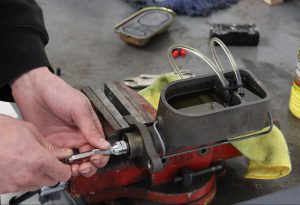
A simple way is to use a Bleeder Syringe Kit, which contains a plastic syringe with a rubber nipple on its end. You can use this syringe in place of the plastic tubes. It is much simpler than the previous process.
Even then, bench-bleeding is complex and time-consuming since we need to remove the master cylinder from the vehicle. It would be much better if we could bleed the master cylinder without bench-bleeding.
Methods To Bleed The Master Cylinder Without Bench-Bleeding
Which brake do you bleed first? We start bleeding on the brake cylinder that is farthest from the master cylinder on your car. It is easy to understand when the bleeding is complete. The old brake fluid is likely to be dark green while the new one will be clear.
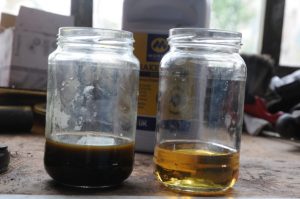
Be careful to keep the brake fluid away from the car’s paint; be wary of dripping or any residue on your hands. Brake fluid can damage the paintwork of your vehicle.
Various methods are listed below to easily bleed the master cylinder without moving it from the car to the workbench.
1. Gravity Bleeding
Can you gravity bleed a master cylinder? Yes, indeed, you can as long as you have plenty of time. This method works for most modern cars, provided the master cylinder is installed higher than the wheels. You will need a 10mm wrench, clear plastic tubing of appropriate diameter for the bleeder screw, and a pretty large container to hold the drained fluid.
How long does it take to gravity bleed brakes? Be warned that this method can take twenty-five to fifty times as long as the other methods. The first brake will take the longest. As you progress to the others wheels, they will take progressively less time. The advantage of this approach is that you do not need a helper or assistant.
2. Using A Bottle To Bleed The Brakes
The second method of bleeding the brakes is to use a bottle to attach the bleed tube, then depress the brake pedal with the bleed valve open.
For this task, you will need:
- brake fluid appropriate for your car
- a bleeder bottle
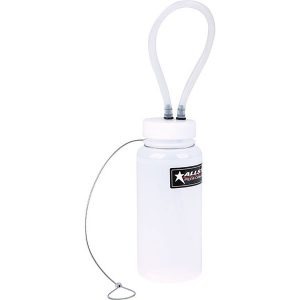
- a funnel if the master cylinder is difficult to access
- simple line wrenches
- some regular wrenches
- a way to close off the rubber tubing, and most importantly,
- a couple of rags.
You will also need a partner to help you out since the bleed screw is usually not close to the brake pedal. One person operates the brake pedal while the other handles the bleed screw.
If the nuts or bolts have rusted, you may have to replace them. It is also a good idea to wrap the bleed screw with some Teflon tape before attaching the tube to ensure a perfect seal.
3. With A Vacuum Pump
In most cases, you can access the bleeder screw from behind the wheel. Therefore, you will have to remove the wheel for this procedure. You can buy a vacuum pump kit containing hoses, bleeder screw fittings and a reservoir to catch excess fluid so that it doesn’t come into contact with the pump. You will also need a wrench to loosen the bleeder screw.
Clean up the area around the bleeder screw so that there is no dirt or contaminant in the working area. You can use a zip-tie or cable tie to tighten the hose if air leaks between the bleeder screw threads.
Continue the procedure until the brake pedal loses the spongy feeling. Then repeat at the other wheels as well.
4. Pressure-Operated Venturi
This pneumatic bleeder uses compressed air and a venturi to expel brake fluid along with the air through the bleed screw. The fluid moves quickly through the hose once the bleeder is in action. Hence, it comes equipped with a large integrated collecting tank. A supply bottle filled with new brake fluid attaches upside down to the master cylinder.
All required equipment is included in the venturi bleeder kit. Other than that, you will need a wrench to operate the bleed screw. Follow the instructions in the video to bleed the master cylinder via this method.
5. Pressure tank
A pressure tank is the simplest method to bleed the brakes. People consider it the best approach to push out every last bubble of air from the brake system. It is the most effective in bleeding the braking system. The concept is that the tank pressurizes the master cylinder itself to push out the air.
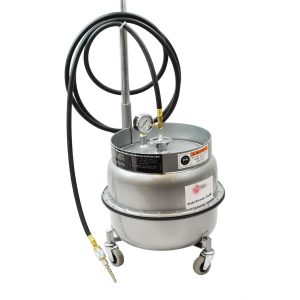
However, the pressure tank is costly (about $600), and it doesn’t make any sense to buy one if you are only bleeding your car. Automobile repair shops will likely have this equipment on hand since they work on a lot of vehicles. You can borrow one from a local garage or have them do the bleeding for you.
Will Brakes Eventually Bleed Themselves?
Bleeding the brakes is another regular maintenance item. When you notice a reduction in the stopping power and time, you cannot help but wonder if the brakes can bleed themselves. No, brakes cannot bleed themselves without any action on your part. You have to follow the methods above to get the optimum brake pressure from the system.
Do You Bleed Power Brakes With Engine Running?
You should bleed your brakes with the engine off. The running engine provides a vacuum boost to the brakes apparatus. Brakes have to be bled without any such boost if you want to completely remove the air from the system.
Conclusion
Using any of the above processes, you can easily bleed the master cylinder without bench-bleeding. You will face no difficulty if you understand how the components of the brake system work together. You must be careful to procure the correct variant of brake fluid for your car. DOT 3 brake system can work with both DOT 3 and DOT 4 brake fluids, while the DOT 4 system only takes DOT 4 fluid. DOT 5 is altogether a different thing.
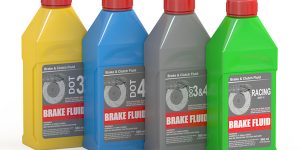
These methods require very minimal disassembly. If you do need any help, feel free to consult a mechanic from a local garage. You can also contact a friend of yours who works with automobiles.


